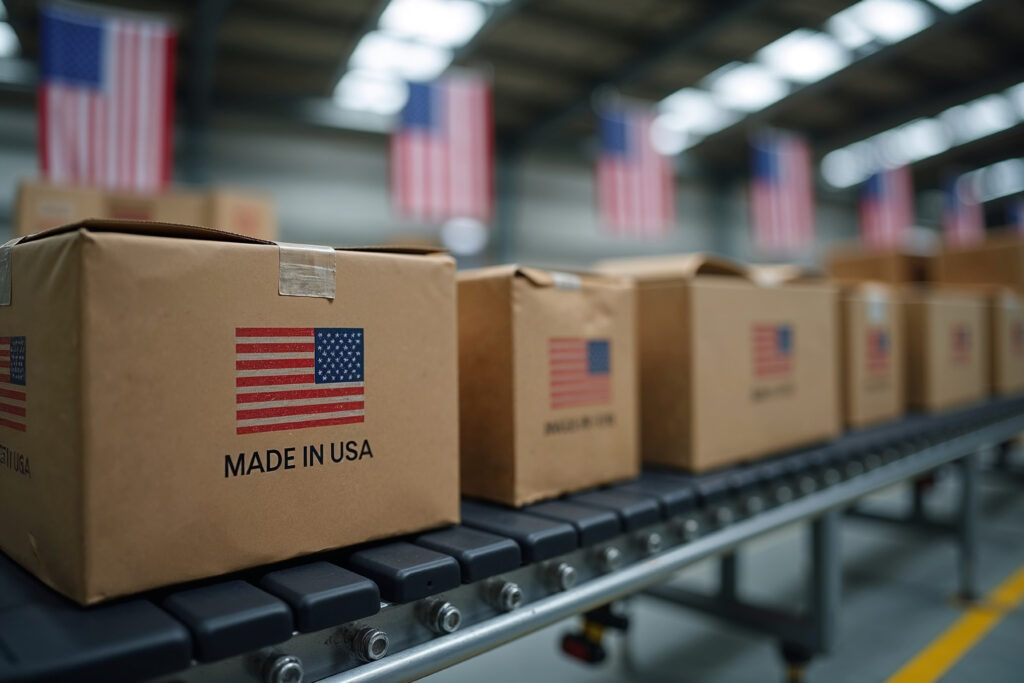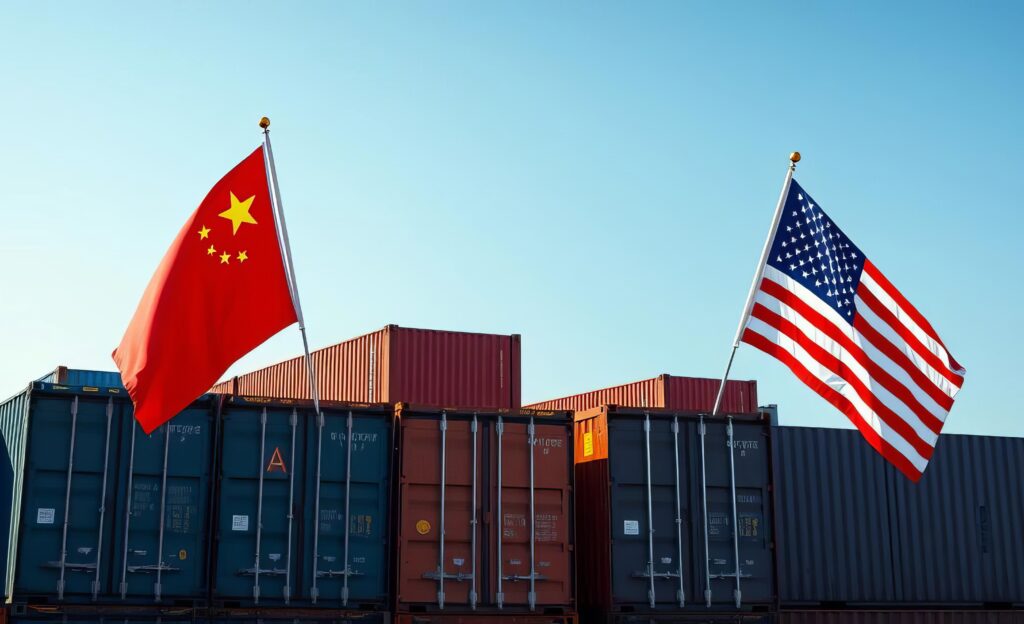Nearshore News: Japan’s Slowdown, India’s Trade Timeline, and How U.S. Brands Are Responding to Tariff Pressure

Tariffs continue to shape global trade and business decisions in significant ways. Japan’s exports to the U.S. are beginning to slow, highlighting the early impact of rising duties. India is laying out a phased approach to its U.S. trade deal, with the first agreement expected by July. While most U.S. companies report they’ll need to raise prices to offset tariff costs, Home Depot is taking a different route—holding prices steady and shifting sourcing. Meanwhile, beauty brands leaning on “Made in USA” claims are facing heightened scrutiny.
Nearshore News Summary:
- Japan’s exports to the U.S. fell by 1.8% in April compared to the same month last year as tariffs begin to take effect (WSJ)
- India and the U.S. are structuring their trade negotiations in three stages, with an initial agreement expected to be signed before July (Bloomberg)
- Home Depot plans to keep most prices steady and sees it as an opportunity to gain market share (WSJ)
- 54% of U.S. businesses said they will raise prices due to tariffs (The Guardian)
- Brands are increasingly leaning on "Made in USA" claims to differentiate, but scrutiny is rising (Cosmetics Design)
Japan’s Exports to U.S. Fall as Tariffs Start to Bite
Published: May 20, 2025
Source: WSJ
Japan’s exports to the U.S. declined in April for the first time in four months, as the impact of rising tariffs began to weigh on trade. The drop in car and machinery shipments contributed to a narrowing trade surplus, increasing pressure on Japan to reach a tariff exemption deal with the U.S.
Key points:
- Exports to U.S. Decline: Japan’s exports to the United States fell by 1.8% in April compared to the same month last year, marking the first decline since December and reversing March’s 3.1% gain.
- Impact of Tariffs: The fall was largely attributed to weakening demand for Japanese cars and machinery — including chip-making equipment — as higher U.S. tariffs begin to take effect.
- Slower Overall Growth: While Japan’s total exports rose 2.0% year-over-year in April, the growth was slower than March’s 4.0% increase and below economists’ expectations of 3.1%.
- Shrinking Trade Surplus: Japan’s trade surplus with the U.S. narrowed to ¥780.6 billion ($5.4 billion) in April, down from ¥846.86 billion in March.
- Urgency for a Deal: With Japan’s economy contracting in Q1, the government faces mounting urgency to negotiate a tariff exemption with the Trump administration to support its manufacturing sector.
India Lays Out Phased Timeline for US Trade Deal
Published: May 20, 2025
Source: Bloomberg
India’s Commerce Minister Piyush Goyal announced that negotiations for an India-US trade deal are progressing well and will follow a three-phase timeline. The first agreement is expected before July, with further stages planned into 2025, culminating in a comprehensive deal pending US congressional approval.
Key points:
- Three-Phase Approach: India and the US are structuring their trade negotiations in three stages, starting with a limited deal and moving toward a broader, long-term agreement.
- Phase One by July: The initial agreement is expected to be signed before July and will include provisions on industrial goods, select agricultural products, and non-tariff barriers.
- Mid-Term Expansion: A more expansive second phase is targeted for September to November, potentially covering additional sectors and deeper commitments.
- Final Deal in 2025: The third and final stage would involve a comprehensive trade pact requiring approval from the US Congress, likely concluding in 2025.
- Momentum From Modi Visit: India was among the first to initiate trade talks with the US under President Trump, building momentum after Prime Minister Modi’s visit to the White House in February.
Home Depot Plans to Keep Prices Steady Despite Tariffs
Published: May 20, 2025
Source: WSJ
Despite rising tariffs and supply chain pressures, Home Depot plans to keep most prices steady by shifting sourcing away from China and working closely with suppliers. The company sees this as an opportunity to gain market share while competitors raise prices, although big-ticket home improvement projects remain on pause due to economic uncertainty.
Key points:
- Home Depot Plans Price Stability: Unlike some competitors, Home Depot is working with suppliers to avoid price increases despite new tariffs. The company believes holding prices steady could help it capture more market share.
- Shifting Away From China: Home Depot has been pushing suppliers to source outside China. By next year, it expects that no single country outside the U.S. will account for more than 10% of its purchases.
- Consumer Spending Holds Up For Now: Despite a slight 0.3% decline in comparable sales, U.S. sales rose 0.2%. Customers are still spending on small- and medium-sized home projects like painting and yardwork.
- Big Projects on Hold: CEO Ted Decker noted that while homeowners have significant home equity, macroeconomic uncertainty is delaying large projects that require financing.
- Steady Forecasts Amid Volatility: Home Depot and Walmart have kept their fiscal 2025 forecasts unchanged, in contrast to other companies that have pulled back due to tariff-related unpredictability.
Majority of US companies say they have to raise prices due to Trump tariffs
Published: May 20, 2025
Source: The Guardian
A majority of U.S. companies surveyed by Allianz say they will raise prices to offset the cost of Trump’s tariffs. Despite some tariff reductions, core levies remain in place, pushing many businesses to pass increased costs onto consumers and threatening export growth.
Key points:
- Most Companies Plan Price Increases: According to Allianz’s survey of 4,500 companies across nine countries, 54% of U.S. businesses said they will raise prices due to tariffs, while only 22% believe they can absorb the added costs.
- Tariff Uncertainty Hits Exporter Confidence: Nearly half of exporters (42%) now expect their turnover to decline in the next year, a stark jump from fewer than 5% before Trump’s “liberation day” tariff announcement on April 2.
- Frontloading to Dodge Costs: About 80% of U.S. companies preemptively accelerated shipments to China before tariffs were implemented, with 25% starting even before the 2024 election.
- Key Tariffs Still in Place: Despite partial rollbacks, significant tariffs remain — including a 10% universal import tariff, a 30% duty on Chinese goods, and sector-specific levies on items like metals and auto parts.
- Summer Price Hikes Expected: While some companies are still holding prices steady, economists and executives — including leaders at Walmart and Mattel — say higher prices are likely by summer if trade tensions persist.
Behind the label: What “Made in USA” really means for beauty brands
Published: May 20, 2025
Source: Cosmetics Design
As tariffs and global supply chain shifts intensify, beauty brands are increasingly leaning on "Made in USA" claims to differentiate. However, such claims are under heightened scrutiny, and falsely asserting U.S. origin can carry steep legal and reputational consequences.
Key points:
- Strict FTC Standard: To claim a product is “Made in USA” without qualification, it must be “all or virtually all” made in the U.S.—including manufacturing and materials. Even minor foreign-sourced components can disqualify a claim.
- Common Missteps by Beauty Brands: Assembling or finishing a product in the U.S. isn’t enough. Using American flags or phrases like “American Built” also doesn’t meet legal standards if the components are imported.
- Case Example: A claim using Dead Sea Salt (a foreign ingredient) was dropped after scrutiny, even though the salt was processed domestically. Even partially imported ingredients can invalidate a U.S.-origin label.
- High Risk of Legal and Consumer Backlash: False claims can lead to FTC investigations, fines, and reputation damage—especially in an era where social media and influencers quickly amplify consumer backlash.
- Best Practices for Brands: Use qualified claims (e.g., “Assembled in the USA with domestic and imported parts”), keep thorough sourcing records, and regularly audit claims and supply chains. Highlighting U.S. jobs or facilities is allowed, but must not mislead consumers about where the product is made.
More blogs


